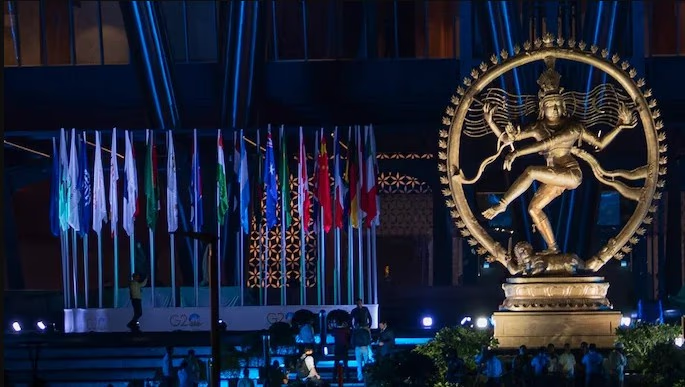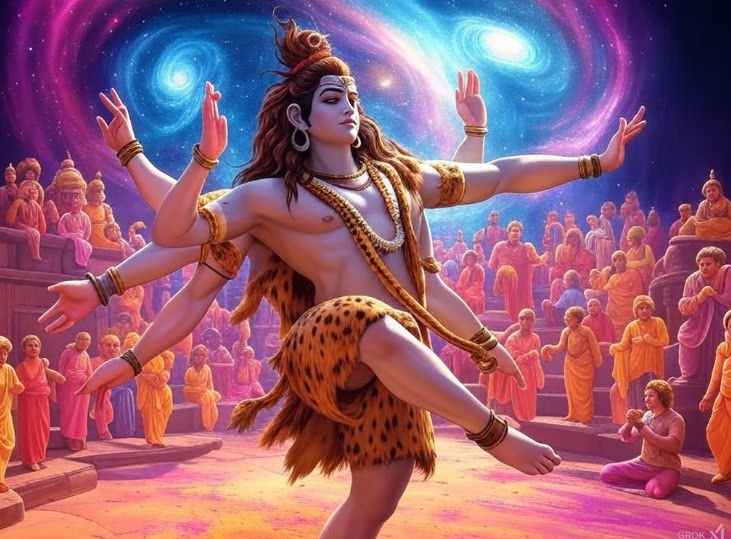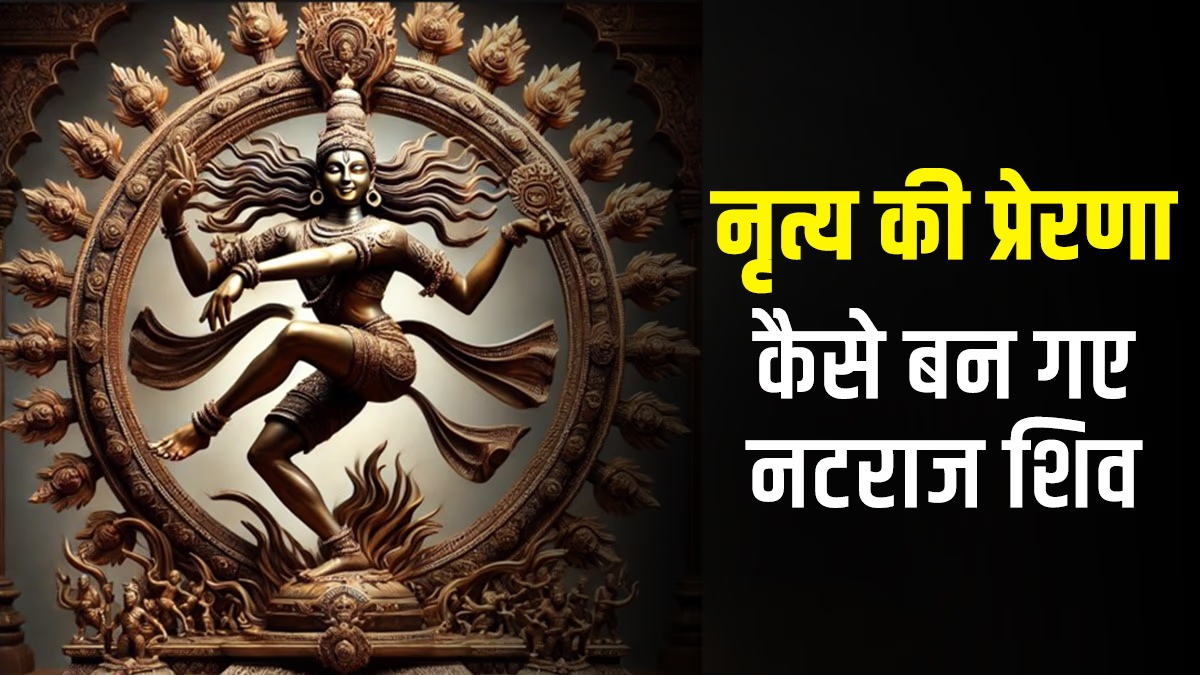In the past year, when the G20 summit was held in the capital city, Delhi, the grandeur of Bharat Mandapam became a talking point. This splendor was further enhanced with the unveiling of the monumental 'Nataraja' statue. Made from ashtadhatu, this statue is regarded as the tallest Nataraja statue in the world, representing an aspect of Lord Shiva as the cosmic dancer. Shiva is revered as the pioneer of dance and is celebrated as the first dancer of the universe, a form known as Nataraja.
The Nat Community of India and Nataraja
Among India's ancient tribal groups is the 'Nat' community. Until the early 21st century, these people could be seen in villages and towns, and they still exist in remote villages. Known for their acrobatics at fairs and roadside performances, these artists belong to the Nat community. However, now, clowns performing tricks in malls have taken their place.

Source: aajtak
The Embodiment of Three Major Fine Arts: Nataraja
Returning to the Nat culture, Shiva's Nataraja form is a remarkable example of the emergence of three primary fine arts: dance, sculpture, and painting. Globally, you will find forms of these arts, but at their core, dance is the most prominent. Addressing dance first is essential.
Does Shiva's Dance Bring Cosmic Destruction?
Shiva's Nataraja avatar symbolizes his dance's final pose. The most renowned fact about his dance is that it emulates the fearsome Tandava, culminating in destruction, thus earning him the title of destroyer. However, this is merely an incomplete fact.
Two Forms of Shiva's Tandava
Shiva's Tandava exists in two forms, Ananda Tandava, and Rudra Tandava. Rudra Tandava is synonymous with anger. Ananda Tandava is characterized by elements of romance and is a dance that fosters new thought creation. It emanates positive vibes and embodies consciousness, beginning with the primordial Sound of Om.
Regarding Tandava, spiritual guru Sadhguru claims that the universe itself is a dance. Everything here is dancing. Even the smallest particle, an atom, dances. The flow of energy exists because of motion. He explains that it is the dance through which the universe manifests itself, with Shiva's dance instilling harmony within it.
The Unique Pose of Shiva's Tandava
Shiva's Nataraja form, like his other forms, is enchanting and can be interpreted in many ways. Shiva is considered the deity of all existing arts in the world. The famous ancient statue of Nataraja Shiva features the dancing Shiva with four arms, surrounded by a circular ring of flames. One foot crushes a dwarf demon symbolizing ignorance, while the other foot is raised upwards in a dance pose. In his first upward-extended right hand, he holds a drum (damaru).
The Unique Features of Shiva's Nataraja Pose
The sound of this drum symbolizes creation, highlighting Shiva's creative power, separate from his widely known destructive narrative. In his other raised hand, Shiva holds fire, indicative of destruction. This suggests that while Shiva creates with one hand, he wields control over destructive forces with the other hand's fire.
The Gesture of Fearlessness, Liberation, and the Destruction of Ignorance
Shiva's second right hand is boldly uplifted in a gesture of reassurance (abhaya), symbolizing protection. Recently, in parliament, Rahul Gandhi mentioned this fearless gesture several times. This outstretched hand of Nataraja Shiva represents the most ancient form of the abhaya mudra, with four fingers touching together and the thumb aligned, representing the five elements. These are the five elements from which creation exists.

Source: aajtak
Finding Liberation at Shiva’s Feet
Shiva's raised foot signifies liberation. His left hand points towards this foot, encouraging the path towards liberation. This implies that liberation resides at Shiva's feet. The demon crushed under his foot symbolizes ignorance, which Shiva eradicates.
Shiva, the Destroyer of Ignorance
Shiva annihilates ignorance. The flames surrounding him symbolize the universe. The serpents adorning his body represent the Kundalini energy and signify how desires and aspirations bind us. His entire form resembles the Om symbol, representing the universe, with the universe residing within Shiva.
This pose of Shiva epitomizes consciousness, revealing the ultimate dimension of spiritual practice. It is this pose that gives birth to the fine arts.
Nataraja: Origin of All Dance Forms
Nataraja serves as a source of inspiration for several Indian classical dance forms, especially Bharatanatyam. This ancient dance style adopts various postures presented by Nataraja. His poses serve as foundational elements in Bharatanatyam's choreography. Dancers aim to embody Nataraja's fluid and rhythmic movements in their performances, thereby breathing life into the cosmic dance.
From Odissi and Kuchipudi to Kathak
Other Indian classical dances like Odissi, Kuchipudi, and Kathak draw inspiration from Nataraja's form. Their performances incorporate specific hand gestures and stances from Nataraja, reflecting the profound connection between dance and devotion in India. Through these captivating renditions, the authentic essence of Nataraja's dance manifests, establishing a link between dancers, audiences, and the philosophical and spiritual concepts that underpin the art. Nataraja continues to inspire dancers, classical and contemporary alike, showcasing his enduring influence and timeless allure.




